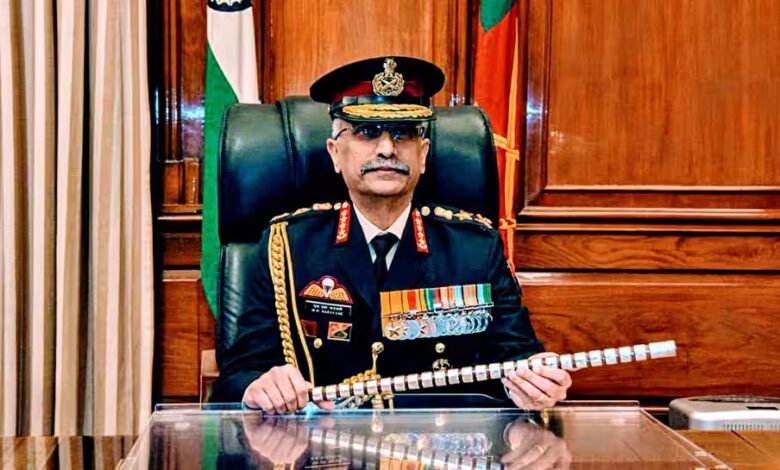Indian Army’s Strategic Depth: Insights from Former Chief M.M. Naravane

Former Indian Army Chief M.M. Naravane has offered valuable insights into India’s national security strategy, particularly the significance of continuous heavy troop deployment along its borders. In his recent opinion piece, Naravane sheds light on the concept of “strategic depth” and its crucial role in shaping India’s security posture.
Strategic depth, as Naravane explains, pertains to the distance between the front lines, known as the Tactical Battle Area (TBA), and the base from which a nation’s military derives its strength in terms of manpower, resources, and material. The space that encompasses the roads, railroads, and lines of communication between these two points is referred to as the Communications Zone (Comn Z).
For nations lacking the luxury of strategic depth or having friendly neighbors, establishing this depth often involves the occupation of territories beyond their borders. Naravane points to Israel’s historical occupation of the Sinai Peninsula as an example of how such strategic depth can be vital in deterring surprise offensives by adversaries.
Naravane’s central argument revolves around India’s unique geopolitical circumstances. India, despite its vast landmass, faces challenges due to its proximity to potential adversaries, notably China to the north and Pakistan to the west. The vulnerability arises from valuable targets located within or near the TBA, where they could be overrun in the early stages of an enemy offensive.
One of Naravane’s key emphases is the defense of major population centers, especially those with religious and political significance. A prime example is Amritsar, located near the international border and susceptible to long-range artillery attacks. The loss of such centers would not only tarnish India’s reputation but also have significant domestic and international ramifications.
In the aftermath of the Galwan clash in 2020, both the People’s Liberation Army and the Indian Army have bolstered their positions along the Chinese front. This demonstrates the seriousness of both sides in maintaining their respective positions and underscores the importance of securing the border.
Naravane underscores the defense imperatives in sectors bordering Himachal Pradesh, Uttarakhand, Sikkim, and Tawang, where religious centers hold immense significance. These regions demand robust defenses from the outset due to their strategic and religious importance.
Despite its expansive landmass, India faces unique challenges that limit the practical value of its strategic depth. Overriding domestic considerations further complicate the strategic calculus.
One of Naravane’s thought-provoking statements underscores the indispensability of adequate troop deployments along India’s northern fronts. He argues that, despite technological advancements, troops on the ground remain essential to ensure effective deterrence and defense.
In essence, Naravane’s insights highlight the complex interplay between geography, geopolitics, and national security in India’s strategic thinking. The need for a robust military presence along the borders, especially in sensitive areas, is paramount to safeguarding the nation’s interests and preserving peace and stability in the region.
News Mania Desk / Agnibeena Ghosh 8th September 2023






